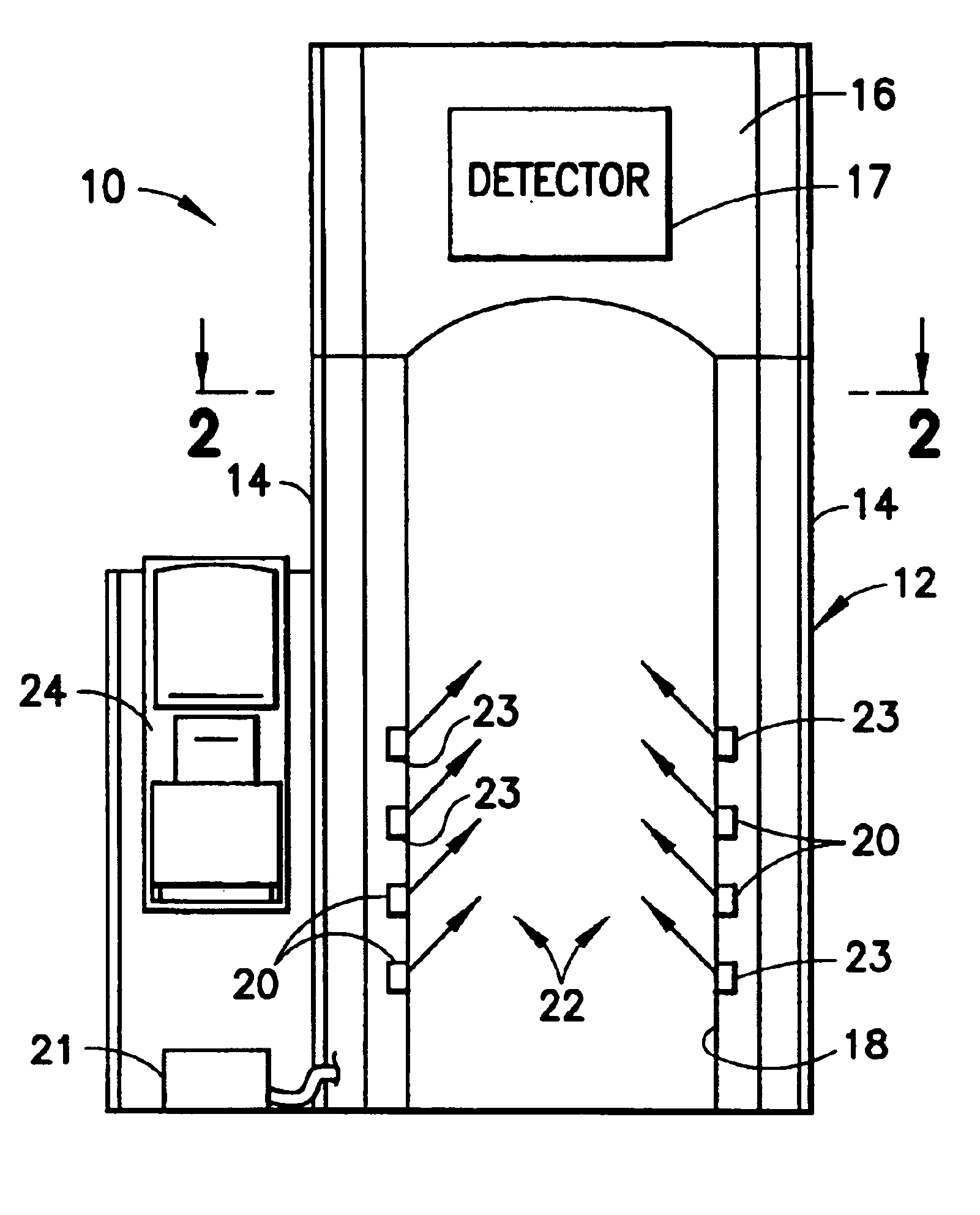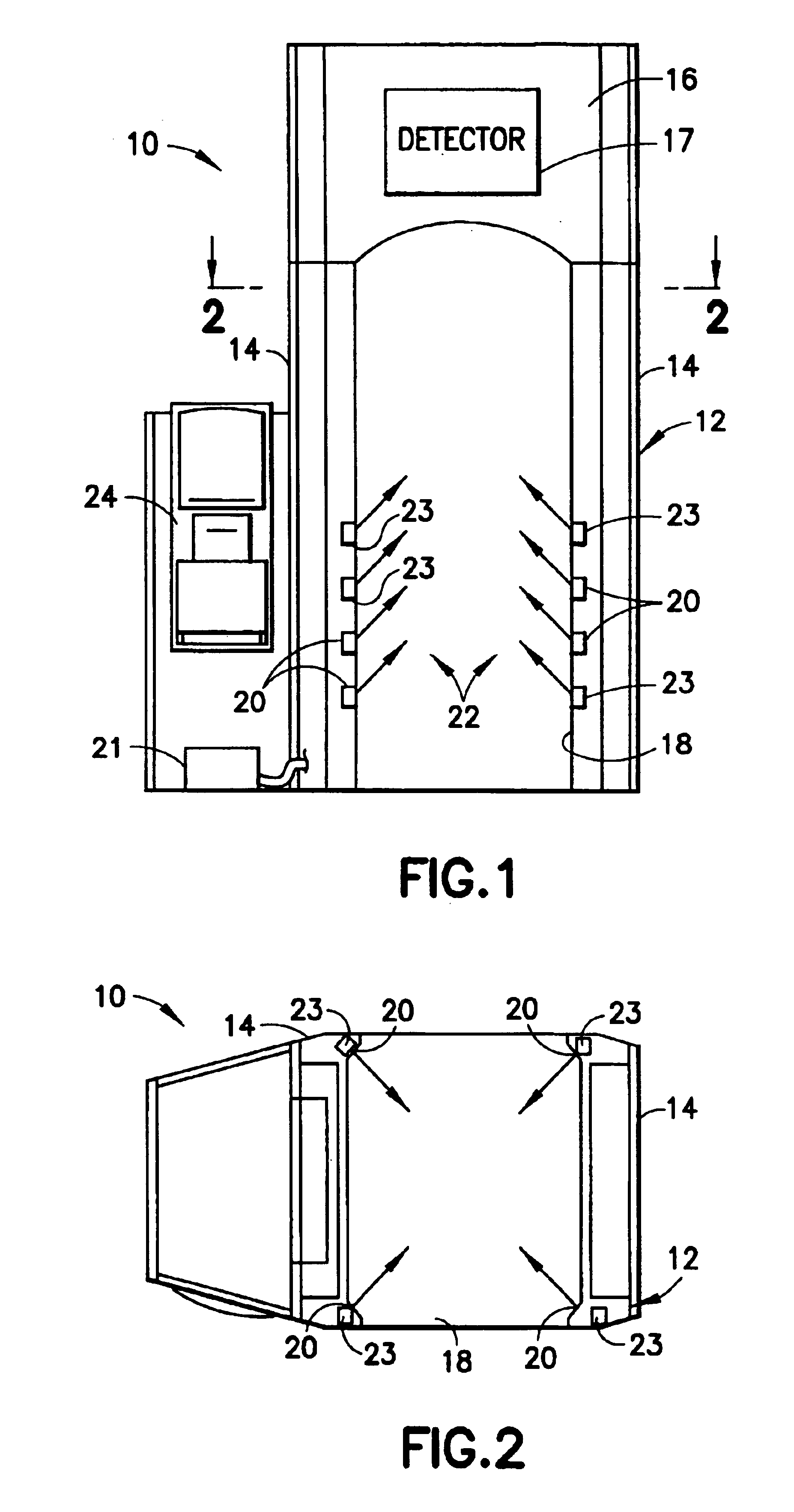Portal trace detection systems for detection of imbedded particles
a technology of imbedded particles and detection systems, applied in the field of detection apparatuses, can solve problems such as adverse effects achieve the effects of reducing or eliminating the effect of jets on human thermal plumes, reducing or eliminating the effect of particles, and increasing the release of particles
- Summary
- Abstract
- Description
- Claims
- Application Information
AI Technical Summary
Benefits of technology
Problems solved by technology
Method used
Image
Examples
Embodiment Construction
A portal detection system in accordance with the subject invention is identified generally by the numeral 10 in FIGS. 1 and 2. The portal detection system 10 is similar to the portal detection system disclosed in U.S. Pat. No. 6,073,499. In particular, the portal detection system 10 includes a portal 12 having a plurality of sidewalls 14, a plastic ceiling or hood 16 and a passage 18 extending between the sidewalls 14 and beneath the ceiling 16. The ceiling 16 preferably is made from or coated with an anti-static material such as KYDEX T as manufactured by Kleerdex. The anti-static material reduces or eliminates the electrostatic accumulation of particles of interest on the ceiling, and hence improves sensitivity. The ceiling 16 includes an inlet with a fan for producing an air flow that substantially matches the air flow rate provided by the human thermal plume. The ceiling 16 further includes at least portions of detection system 17. The detector of the subject invention is not di...
PUM
 Login to View More
Login to View More Abstract
Description
Claims
Application Information
 Login to View More
Login to View More - R&D
- Intellectual Property
- Life Sciences
- Materials
- Tech Scout
- Unparalleled Data Quality
- Higher Quality Content
- 60% Fewer Hallucinations
Browse by: Latest US Patents, China's latest patents, Technical Efficacy Thesaurus, Application Domain, Technology Topic, Popular Technical Reports.
© 2025 PatSnap. All rights reserved.Legal|Privacy policy|Modern Slavery Act Transparency Statement|Sitemap|About US| Contact US: help@patsnap.com


